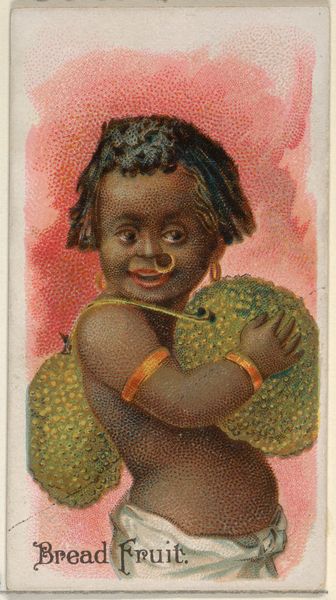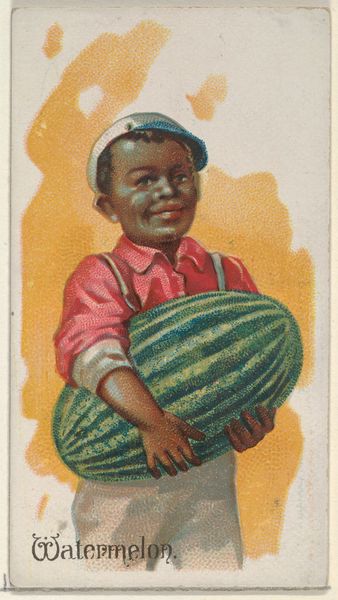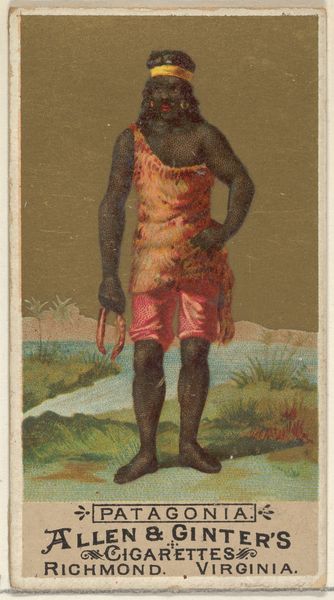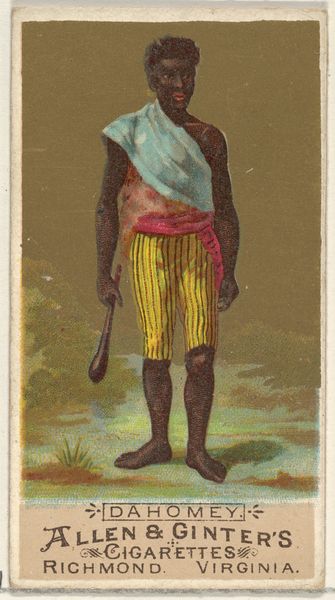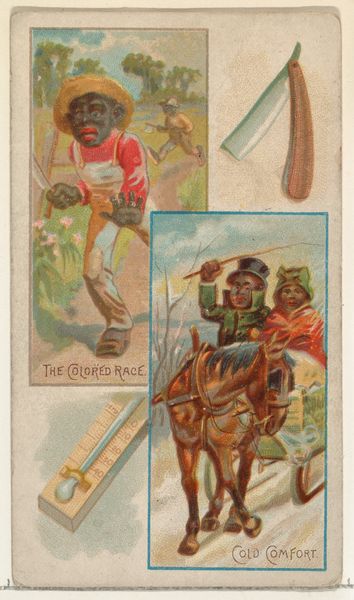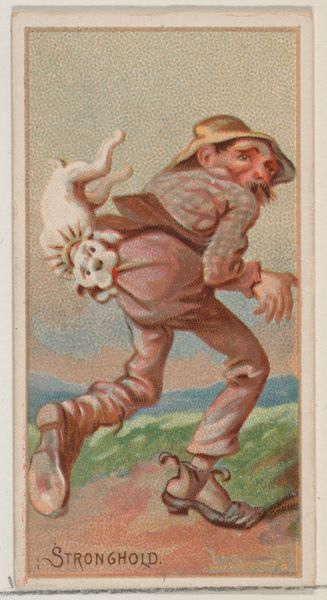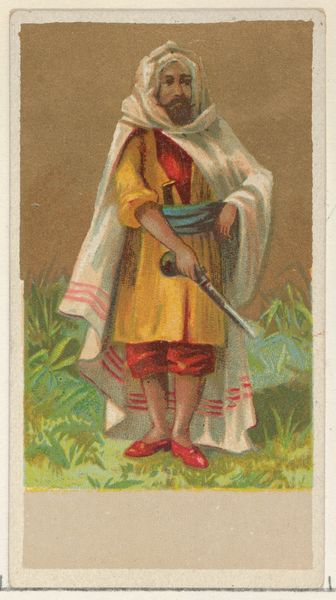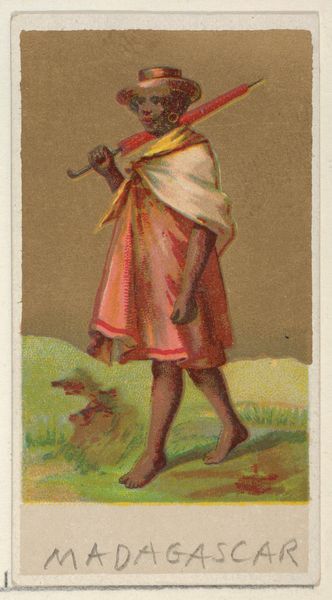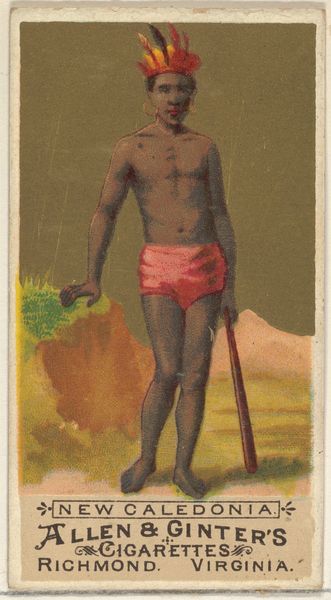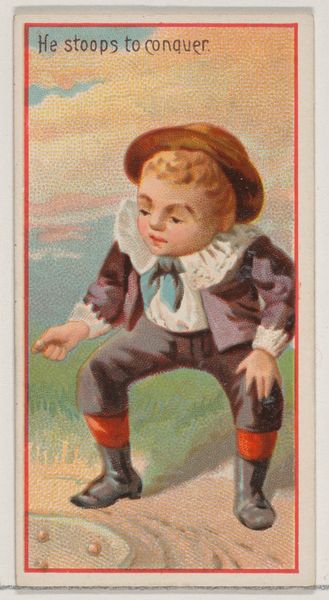
Caricatured figure / The Colored Race, from the Jokes series (N87) for Duke brand cigarettes 1890
0:00
0:00
Dimensions: Sheet: 2 3/4 × 1 1/2 in. (7 × 3.8 cm)
Copyright: Public Domain
Curator: This chromolithograph, dating to 1890, is a caricature of a Black individual entitled "The Colored Race." It's from the "Jokes" series of trade cards produced by W. Duke, Sons & Co. for their Duke brand cigarettes. The card would have been included in the cigarette packs. Editor: It's immediately striking how this imagery relies on the grotesque exaggeration of facial features, evoking a powerful feeling of discomfort. It almost seems to me a pastiche of fear and loathing materialized onto a flimsy card. Curator: The symbolism here is deeply problematic, relying on racist stereotypes prevalent during that era. Consider the exaggerated features: the wide eyes and thick lips which reduce an entire group to demeaning characteristics. The image is an obvious symbol of a harmful social hierarchy that promoted division. Editor: I find it fascinating how such everyday materials as tobacco packaging became vehicles for reinforcing harmful stereotypes. Mass production of these cards provided an effective and accessible format for propagating hateful messages, becoming deeply embedded in consumer culture. Curator: Precisely, and examining the material production reveals a calculated approach to brand marketing which shamelessly deployed harmful representations. Tobacco companies had the means to craft a certain cultural view to create narratives for widespread consumption, effectively weaving prejudice into daily lives. Editor: And it is the contrast between the fragility of the card itself and the lasting damage it causes that is truly horrifying. The seemingly innocent object holds immense power, illustrating how casual the reinforcement of discriminatory attitudes had become. Curator: Ultimately, viewing such artifacts reminds us of the vital importance of dismantling damaging symbols and addressing the tangible consequences of these deeply entrenched prejudices. It is critical to understand the material history in order to fully appreciate its contemporary ramifications. Editor: I agree. Confronting such charged images compels us to dissect how these distorted symbols functioned within systems of power, which still echoes today, so that we can promote healing.
Comments
No comments
Be the first to comment and join the conversation on the ultimate creative platform.
